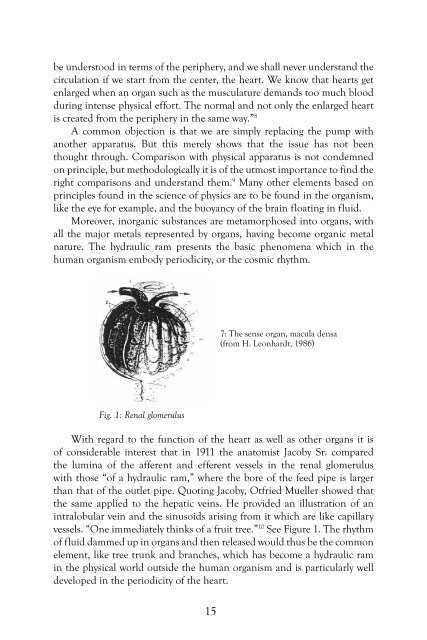When Healing Becomes Educating, Vol. 6 - Waldorf Research Institute
When Healing Becomes Educating, Vol. 6 - Waldorf Research Institute
When Healing Becomes Educating, Vol. 6 - Waldorf Research Institute
Create successful ePaper yourself
Turn your PDF publications into a flip-book with our unique Google optimized e-Paper software.
e understood in terms of the periphery, and we shall never understand the<br />
circulation if we start from the center, the heart. We know that hearts get<br />
enlarged when an organ such as the musculature demands too much blood<br />
during intense physical effort. The normal and not only the enlarged heart<br />
is created from the periphery in the same way.” 8<br />
A common objection is that we are simply replacing the pump with<br />
another apparatus. But this merely shows that the issue has not been<br />
thought through. Comparison with physical apparatus is not condemned<br />
on principle, but methodologically it is of the utmost importance to find the<br />
right comparisons and understand them. 9 Many other elements based on<br />
principles found in the science of physics are to be found in the organism,<br />
like the eye for example, and the buoyancy of the brain floating in fluid.<br />
Moreover, inorganic substances are metamorphosed into organs, with<br />
all the major metals represented by organs, having become organic metal<br />
nature. The hydraulic ram presents the basic phenomena which in the<br />
human organism embody periodicity, or the cosmic rhythm.<br />
7: The sense organ, macula densa<br />
(from H. Leonhardt, 1986)<br />
Fig. 1: Renal glomerulus<br />
With regard to the function of the heart as well as other organs it is<br />
of considerable interest that in 1911 the anatomist Jacoby Sr. compared<br />
the lumina of the afferent and efferent vessels in the renal glomerulus<br />
with those “of a hydraulic ram,” where the bore of the feed pipe is larger<br />
than that of the outlet pipe. Quoting Jacoby, Otfried Mueller showed that<br />
the same applied to the hepatic veins. He provided an illustration of an<br />
intralobular vein and the sinusoids arising from it which are like capillary<br />
vessels. “One immediately thinks of a fruit tree.” 10 See Figure 1. The rhythm<br />
of fluid dammed up in organs and then released would thus be the common<br />
element, like tree trunk and branches, which has become a hydraulic ram<br />
in the physical world outside the human organism and is particularly well<br />
developed in the periodicity of the heart.<br />
15

















